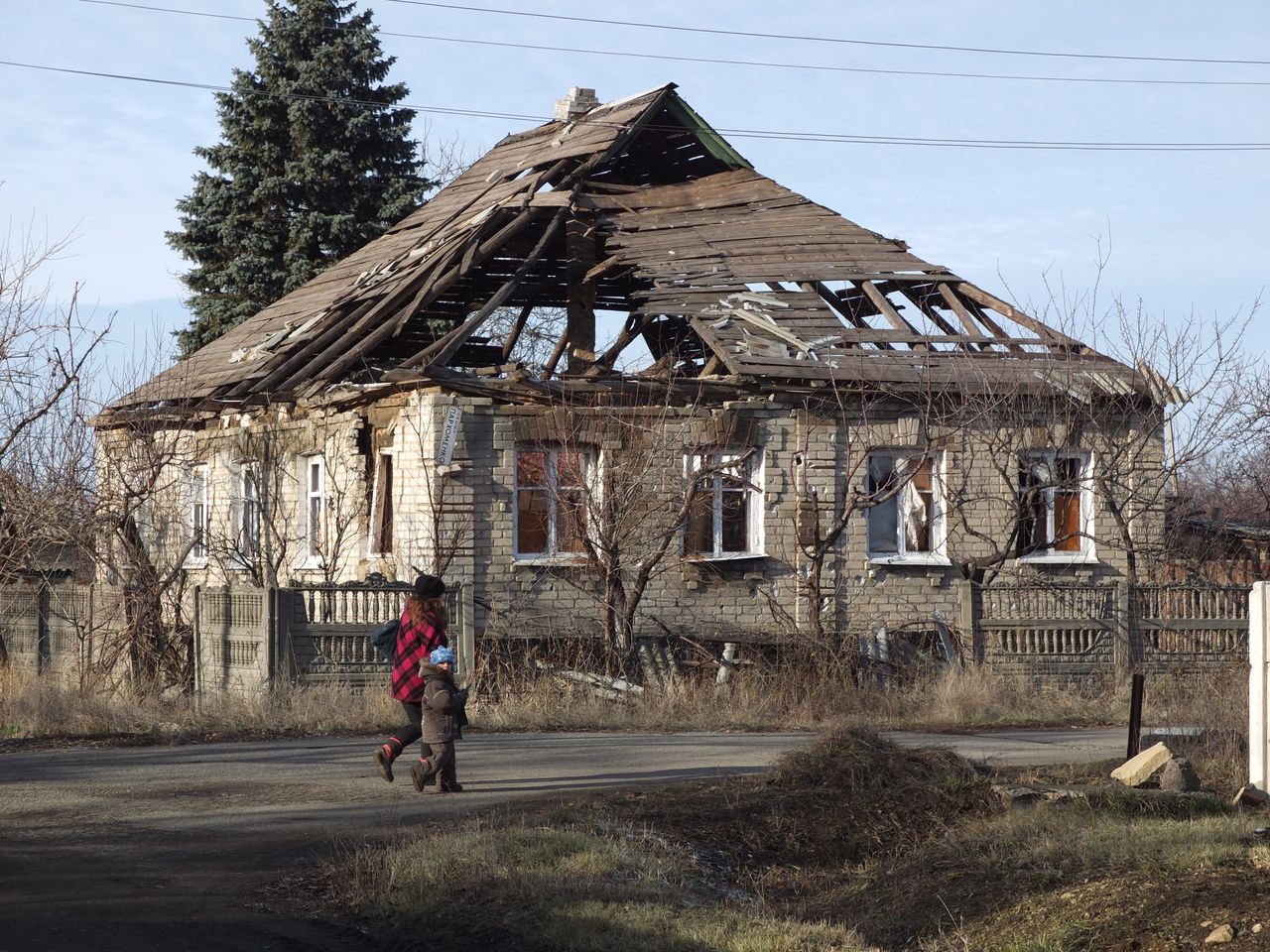
Another agreement and a pre-holiday ceasefire in Ukraine
A trilateral Contact Group agreed on another ceasefire in the eastern Ukraine. It entered into force at midnight on December 23. The situation on the frontline has been tightened in recent weeks. European Union expressed its concern over the increase in the number of fire, including the use of artillery.
On December 18, pro-Russian fighters using the multiple rocket launcher BM-21 Grad fired on Nowoluganskie, a small town in the Donetsk region. 40 missiles hit the houses there, which means that a full bank of forty launch tubes was fired. Eight people were injured, about 50 houses were damaged. A school and a kindergarten were also hit by the rockets.
20 rockets fired by the militants struck the village of Zajceve in the Donetsk region a day later.
According to the ATO headquarters press release, the fire was coming from Horlivka (Russian name: Gorlovka) which is under the control of militants. The Ukrainians attacked their position in return.
The Donetsk People’s Republic informed in turn that artillery shells fired by the Ukrainian army hit civilian houses. According to their reports, on December 20, sixteen 122-millimetre bullets were to explode in the centre of Yasynuvata, located near Donetsk. Because of the shelling, two residents were killed and two more were wounded.
It is difficult to verify information given by the militants. In addition, there was virtually no Western media on the site. There were only Russian journalists. The OSCE Mission does not appear at the incident sites in the evenings due to its statute and security issues.
The statement issued by the EU highlights the concerns about the escalation of the conflict. It has been pointed out that in December the number of shelling along almost 500 km of the demarcation line – which is actually the front line – is the highest since February 2017.
‘The deployment of armed forces near residential buildings and the shelling of critical infrastructure is an evidence of a total lack of respect for human life,’ the UE statement says.
The European Union also made an appeal to Russia to influence the separatists to stop the fire. It was also emphasized that the sides of the conflict should respect the ceasefire and keep heavy weapons only in special places outside the front line.
An agreement on the withdrawal of weapons with a calibre above 100 millimetres from the front line was concluded on 30 September 2015 in Minsk. However, practice has shown that both sides do not obey it.
Unfortunately, none of the points of previously concluded agreements regarding the end of the conflict in eastern Ukraine has been fulfilled so far. In exchange further documents are signed regarding the intermittent ceasefire, but it does not last longer than a few days.
Another agreement will come into force at midnight on December 23, due to the upcoming holiday season. It is difficult to predict how long it will last.
On average one child every week was killed or wounded because of the conflict in the eastern Ukraine between January and November 2017, UNICEF alarms. The most common reasons are mines and unexploded bombs. The east of Ukraine is one of the most ‘polluted’ places in the world, and 220,000 children live in the direct zone of the conflict.
Humanitarian problems may increase due to the withdrawal of Russian officers from the Joint Centre for Control and Coordination (JCCC) on ceasefire and stabilization of the demarcation line. JCCC is among the institutions that are supposed to control the ceasefire and act in situations when there is a violation of an agreement.
’Tense moral and psychological situation’ that Russian officers met during their activities was the official reason for the withdrawal. The Ukrainian side was about to hamper Russians’ work on their side of the demarcation line (front line).
Earlier the Russian Ministry of Foreign Affairs also claimed that the new rules for the entrance of Russian citizens – which the Ukrainian side is planning to implement on January 1, 2018 – are unacceptable for soldiers. According to new regulations, Russians entering Ukraine should in advance provide personal details to the local authorities.
The war in eastern Ukraine started in the spring of 2014. Over 10,000 people have died due to military actions so far.

























































































































